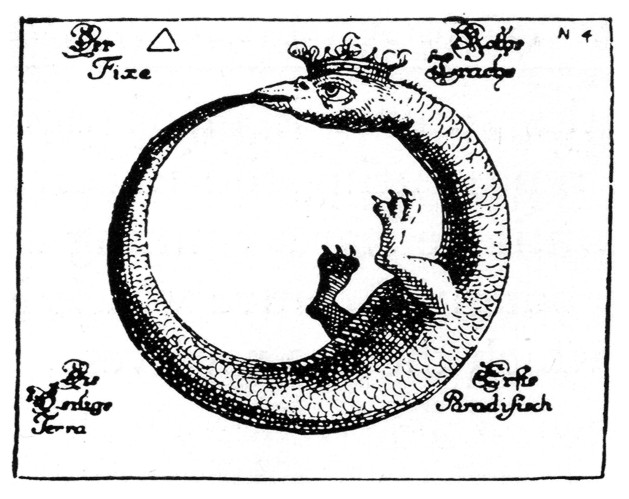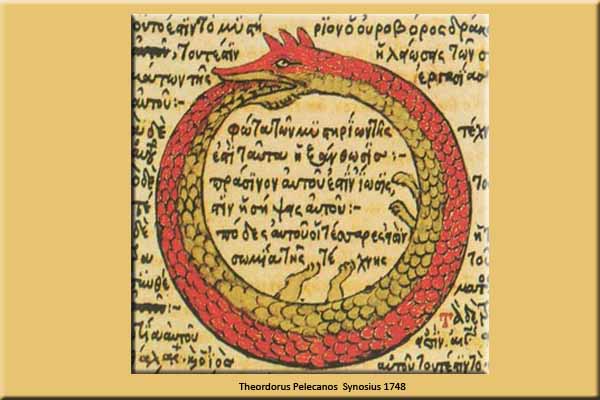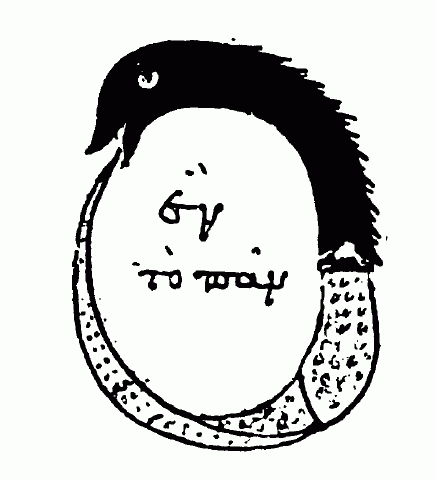A Jungian Shaggy Snake Story
Boris Yeltsin, the first popularly elected President of the Russia Federation, was well known for his predilection for vodka.
What was not so well known was that he both an ophiologist – a collector of snakes – and a shrewd manipulator of the foreign currency exchange, where he would regularly bet against the ruble in favor of the European currency and make a hefty return.
In the same way that some Russians made fun of Rudolf the Red and his reindeer, the Russian Jungians (a small but vociferous minority group) made fun of Yeltsin by taunting him with, “Hey, if if ain’t EuroBoris…”

The Ouroboros or Uroborus is an ancient symbol depicting a serpent or dragon eating its own tail.
The Ouroboros often represents self-reflexivity or cyclicality, especially in the sense of something constantly re-creating itself, the eternal return, and other things perceived as cycles that begin anew as soon as they end (compare with phoenix). It can also represent the idea of primordial unity related to something existing in or persisting from the beginning with such force or qualities it cannot be extinguished. The ouroboros has been important in religious and mythological symbolism, but has also been frequently used in alchemical illustrations, where it symbolizes the circular nature of the alchemist’s opus. It is also often associated with Gnosticism, and Hermeticism.
Carl Jung interpreted the Ouroboros as having an archetypal significance to the human psyche. The Jungian psychologist Erich Neumann writes of it as a representation of the pre-ego “dawn state”, depicting the undifferentiated infancy experience of both mankind and the individual child. (Source)

From Carl Jung, Collected Works, Vol. 14 para. 513)
The alchemists, who in their own way knew more about the nature of the individuation process than we moderns do, expressed this paradox through the symbol of the Ouroboros, the snake that eats its own tail.
The Ouroboros has been said to have a meaning of infinity or wholeness. In the age-old image of the Ouroboros lies the thought of devouring oneself and turning oneself into a circulatory process, for it was clear to the more astute alchemists that the prima materia of the art was man himself.
The Ouroboros is a dramatic symbol for the integration and assimilation of the opposite, i.e. of the shadow. This ‘feed-back’ process is at the same time a symbol of immortality, since it is said of the Ouroboros that he slays himself and brings himself to life, fertilizes himself and gives birth to himself. He symbolizes the One, who proceeds from the clash of opposites, and he therefore constitutes the secret of the prima materia which […] unquestionably stems from man’s unconscious.



3 Comments